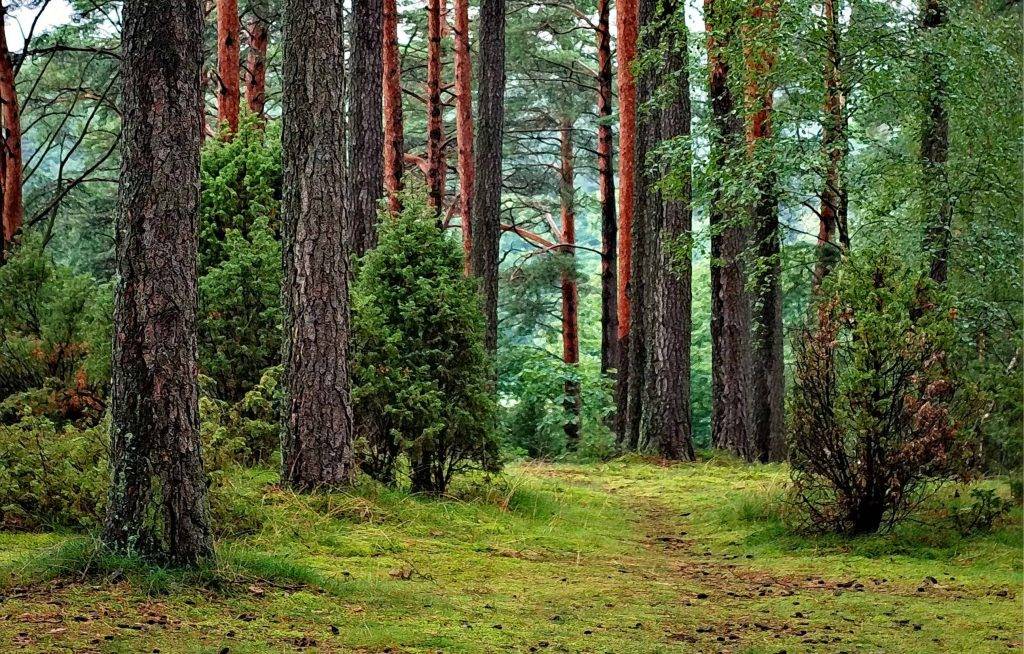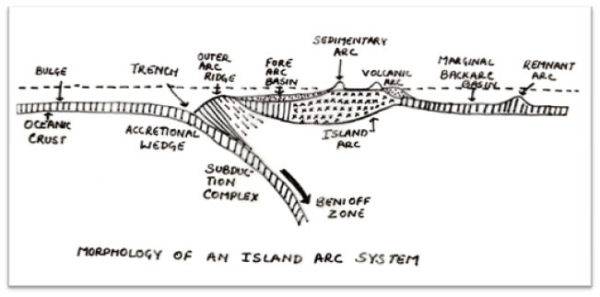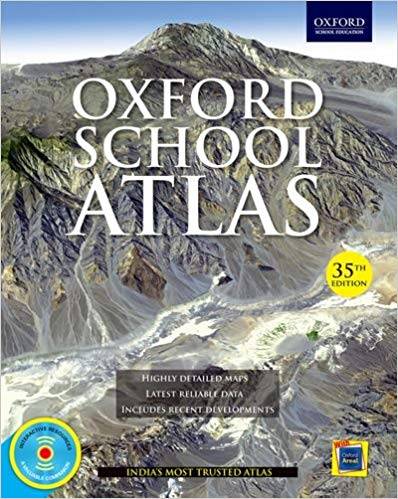Introduction
Ecology as a discipline is focused on studying the interactions between an organism of some kind and its environment. In ecology, ‘niche’ refers to the role an organism or species play in its ecosystem. An organisms niches includes everything affected by the organism denying its lifetime.. Ecology has been variously defined by other investigators as “Scientific natural history”, “the study of biotic communities, or “the science of community population”, probably the most comprehensive definition is the simple one most offers given’ a study of animal and plants in their relations to each other and to their environment.
Ecology may be studied with particular reference to animals or to plants, hence animal ecology an plant ecology. Animal ecology, however, cannot be adequately understood except against a considerable background of plant ecology.Ecology is basically concerned with four levels of biological organisation – organisms, populations, communities and biomes.
Ecology at the organismic level is essentially physiological ecology which tries to understand how different organisms are adapted to their environments in terms of not only survival but also reproduction. The key elements that lead to much variation in the physical and chemical conditions of different habitats are temperature, water, light and soil(abiotic) and also – pathogens, parasites, predators and competitors – of the organism with which they interacts constantly(biotic components)
Major Abiotic Factors
Light
Sunlight is one of the principal nonliving factors in an ecosystem because green plants use sunlight to produce organic material. This process is called photosynthesis. In addition to sunlight, photosynthesis requires water and carbon dioxide. The organic products of photosynthesis include a variety of sugars. Carbon dioxide is a chemical compound that can be described as ‘low energy’, while sugars have a great deal of energy stored in their chemical bonds. Thus, in the process of photosynthesis, the energy from sunlight is turned into, or stored as, chemical energy.
In addition to organic materials, oxygen is produced during photosynthesis. Plants themselves use some of this oxygen, but they generally produce more than they need. All animal life, including human life, depends on this excess oxygen for respiration. We also depend on the sugars produced during photosynthesis for food, whether we eat the plants directly or whether we eat animals that eat plants.
The process of photosynthesis can be summarized as follows:
Green plants
Carbon dioxide + Water ———————–> organic material (sugars) + oxygen
Sunlight
However, this equation is only a summary. Photosynthesis actually consists of many separate reactions facilitated by a number of different enzymes (biological catalysts). A variety of organic materials are formed, here represented by the formula C6H12O6.
In most ecosystems, sunlight is present in sufficient amounts. Only in the depths of the ocean or of inland lakes or in caves does the lack of sunlight limit growth in an ecosystem.
Moisture
The amount of moisture in environment varies widely, from desert areas to lakes and oceans. All forms of life on earth require water to live, and the abundance and quality of water are major factors in determining what kinds of communities will develop in a given environment. In land environments, the amount of available moisture is a function of precipitation, humidity, and the evaporation rate. In water environments, the types of communities may also depend on the availability of water; however, in this case the availability of water means changes in water levels – that is, changes with the tides. Availability of water can also refer to differences in salt content, which affects the rate at which water enters or leaves organisms.
Water and Temperature – Water is unusual in that a relatively large amount of heat is needed to change its temperature or to change solid water (ice) to a liquid or liquid water to a gas (water vapour). For these reasons, temperature changes in water tend to occur slowly, and changes in water temperature occur more slowly than changes in air temperature. This is important for organisms living in water, since it gives them more time to adjust to temperature changes.
Water reaches its greatest density at 3.94° C. That is, a given volume of water (for example, a 1-cm cube) weighs more at 3.94° C than at any other temperature. Its density decreases as the temperature decreases below this point. If you keep in mind that ice forms at 0° C, you can see that a given volume of ice at 0° C is lighter than the same volume of water at 3.94° C. This is why ice floats on cold water. This is an important property because it prevents lakes from freezing solid. The ice layer floats on top of the lake and insulates the water beneath it, allowing many aquatic creatures to survive during winter in the water below the ice.
Warm water, being less dense than cold water, also floats on cold water. This is important in managing reservoirs and also in determining the effects of pollutants on lakes, such as the phosphorus in detergents.
Water as a Solvent – Water is the most common solvent in nature. The amount and kinds of nutrients dissolved in water affect the growth of organisms. In a similar way, pollutants dissolved in water, even those that are only slightly soluble, affect organisms in land or water environments. For instance, acid rain is formed when sulphur oxides, produced by burning fossil fuels, dissolve in rain. Acid rain has reduced forest growth in Scandinavian countries and has caused entire populations of sport fish to disappear from some lakes in the Adirondack Mountains of New York State.
Salinity
Salt waters, such as the oceans, generally contain about 3.5% salt, or 35 parts of salt for every 1,000 parts of water. Some inland lakes and seas can have even higher salt concentrations, for example, Great Salt Lake in Utah or Lake Nakuru in Kenya. In contrast, fresh waters average 0.05% salt, or 0.5 parts per thousand. Most of the salt in the oceans is sodium chloride, but many other salts are present.
The salt content of water is one of the major factors determining what organisms will be found there. Freshwater organisms, both plant and animals, have a salt concentration in their body fluids and inside their cells higher than that of the water in which they live. Because substances tend to move from areas of higher concentration to areas of lower concentration, salts tend to leave these organisms. Freshwater organisms have developed mechanisms or structural parts to cope with this situation. In addition, freshwater organisms have evolved so that they contain lower salt concentrations in their bodies than organisms found in salt water.
Some saltwater organisms (for example, marine algae and many marine invertebrates) have a salt concentration in their bodies or cells almost identical to that of ocean water. However, many marine organisms have body fluids with a lower salt concentration than the water in which they live. For these organisms, water tends to leave their cells or bodies and salts tend to enter. Their regulatory mechanisms must solve a different problem from that of freshwater organisms. Bony fish, for instance, have developed ways of excreting salt and retaining water. The main point is that the two environments, salt water and fresh water, provide different conditions for organisms to adapt to and thus are inhabited by different kinds of organisms.
In addition to salt and fresh waters, there are brackish waters, with intermediate salt concentrations. Such waters occur wherever salt and fresh waters meet – in estuaries, for instance, or where salt water intrudes on fresh groundwaters. Certain organisms are adapted, for all or part of their life cycles, to various intermediate salt concentrations.
Land-dwelling animals and plants tend to lose water to the atmosphere. In this respect, they resemble many marine species because during their evolution they have also had to develop mechanisms to conserve water.
Temperature
Temperature has a profound effect on the growth and well-being or organisms. The biochemical reactions necessary for life are dependent on temperature. In general, chemical reactions speed up two to four times for a 10° C rise in temperature. Nonetheless, it is not possible to make sweeping generalizations about the effects of environmental temperature on the distribution of organisms because organisms have developed so many and varied mechanisms to deal with temperature changes.
Warm-blooded organisms, such as humans, are able to maintain a constant body temperature independent of the temperature of their environment. They are called endothermic or homeothermic organisms. Body warmth is a by-product of internal biochemical reactions that produce energy for the organism. In a cold environment, warm-blooded animals can retain this body warmth by insulation (blubber, feathers, fur, clothing). In a warm environment, the heat is lost by processes usually involving the evaporation of water (humans sweating from the skin, dogs panting and allowing their tongues to hand out). During very cold weather, when animals have difficulty finding enough food to burn to keep their body temperatures at a high level, some of them hibernate. During this time, their rate of energy use falls, so their body temperature falls as well.
The temperature of so-called cold-blooded (ecotothermic) animals, as well as of plants and micro-organisms, varies with that of the environment. However, even in this group of organisms there are a variety of mechanisms to adjust body temperature. Most of these mechanisms would be classified as behavioural methods of regulation. For example, bees can warm their hive by beating their wings. This is such an effective method that been can live and reproduce in arctic regions. Many insects, snakes, and lizards warm themselves in the sun, taking up a position broadside to the sun’s rays during the cool morning hours. Mosquito larvae develop quickly in the uppermost layers of ponds, where the sun’s rays warm the water. When temperatures rise, many organisms take refuge in holes or burrows or under rocks. This helps them escape a lethal rise in body temperature or, in the case of desert organisms, prevents excessive use of precious water for cooling. During freezing weather, extothermic animals and plants may produce anti-freze substances in their cells to prevent them from freezing. Many animals produce glycerol, while plants produce sugars such as hamamelose.
Photosynthesis does not depend on temperature as strongly as other reactions do because it is not just a biochemical reaction but also involves photochemical (light-driven) reactions. Thus, photosynthesis is almost as effective in producing organic material in cold as in warm climates.
Most of the observations we can make about temperature and its effects on organisms are on a large scale. For instance, fewer types of organisms seem able to adapt to conditions in the Arctic where temperatures are far below the biological optimum. Even this seemingly obvious principle is complicated by the observation that besides the severity of temperature, the variability of conditions is also important. That is, fewer types of organisms are found where temperatures vary widely from day to night or season to season than where temperature are more constant. However, one thing we can say with confidence is that organisms, during the course of their evolution, have developed mechanisms to deal with temperature as it is found in their environment, whether that is warm or cold, constant or fluctuating. Human actions that change these temperatures can have devastating effects on ecosystems. For example, in Denmark the brown weevil (Hylobius abieties) normally takes three years to develop. When the forest is clear cut (all trees cut, regardless of size or species), the sun warms the ground more than before and the weevil matures in two years. For this reason, the weevil does much greater damage to forests where clear cutting is allowed.
Oxygen Supply – Both plants and animals use oxygen in the process of respiration, whereby they obtain energy for growth and metabolism. Respiration consists of a series of biochemical reactions in which an energy-containing organic material, such as the sugar glucose, is broken down by biological catalysts called enzymes. The energy released is used to drive other reactions in the cell. If oxygen is available, the material is fully broken down to carbon dioxide, water, and energy.
In land environments, oxygen is rarely in short supply. (Exceptions would be in some soils or on high mountaintops). In water, on the other hand, the supply of oxygen may easily be a problem. The concentration of oxygen in water depends on the rate at which the gas diffuses into water, as well as on the rates at which it is produced by the plants living there and used by the plants and animals in the water.
In some lakes, the supply of plant nutrients allows the growth of masses of algae, which die, sink to the bottom, and are decomposed by bacteria. This last process can use up all the oxygen in the water. Other desirable organisms cannot live in this oxygen-poor water. The addition of sewage to natural water environments results in the loss of much of the oxygen present.
Fire
Fire can also be considered an abiotic factor that influences the types of communities in an ecosystem. Some environments are subject to regular natural cycles of fire. In southeastern pine forests of the United States, in the grassy savannahs of Africa, and the steppe regions of the USSR, periodic fires are a natural event.
In grasslands, periodic fires kill tree seedlings, while grasses, whose major energy stores and growth centers are underground, quickly sprout up after the fire. In this way, fire prevents the transition of grasslands to forests in certain areas.
Trees in forests where fires are regular may have thick bark that enables them to survive fires. The cones of some pines, such as the Jack pine (Pinus banksiana), release seeds best when heated to a certain temperature. In this way, the seeds are sown at times when other plants that might compete for living space have been eliminated from the area. In fact, in the pine-spruce forests in northern Europe, fire actually allows pines to grow. There are certain areas in these forests where the spruce have grown up in dense stands, crowding out the pines, which do not compete well for living space. Although the spruce are easily damaged by fire, once they form a dense stand it is difficult for fire to spread because the short spruce needles pack tightly on the ground and are resistant to fire. However, where pine and spruce are mixed, the forest floor accumulates loose piles of litter shed by the pines. Periodic fires in the mixed pine-spruce forest injure the spruce and allow pines to flourish.
In several cases, it has been shown that the vegetation growing up after a fire has more nutrients, such as phosphorus, potassium, calcium, and magnesium. Animals feeding on this vegetation may be better nourished. When humans prevent these natural fires, they are really causing changes in ecosystems that have come to depend on fire for periodic renewal.
Fire has now become an accepted part of forest management, although the public has been slow to accept this idea.
Soils
The type of soil found in an area is very important to humans because soils vary widely in their ability to support crops. The most useful soils from this point of view are the grassland and temperate forest soils. Other types, such as desert soil or the soil in tropical rain forests, are not as generally suited for raising crops. However, scientists looking at the effect of soil type on the kinds and distribution of organisms in an area have concluded that while soil type can have some effects on communities, the communities themselves have a profound effect on the type of soil in an area. To understand this, it is necessary to realize that soil is not an entirely abiotic component of ecosystems but rather is a mixture of living and non-living materials.
The nonliving part of soil is the finely divided particles produced by the action of weathering on the parent material of the earth’s surface. Combined with this is organic material: organisms and their products, which grow, die, and become mixed in.
If we dig a trench vertically down into a particular kind of soil, along the sides of the trench we can see several layers, or horizons. The arrangement of these horizons is called the soil profile. This profile differs for soils found in various biomes.
The top layer, or A horizon, varies in depth from less than an inch (2.5 cm) in tropical rain forests to several feet in some grasslands. This layer, often called topsoil, contains plant roots, fungi, microorganisms, and a wide variety of soil insects and other burrowing animals. Also found here are dead and decaying parts of plants and animals. In land ecosystems, this is where the chief turnover of organic matter occurs. Here all the unused organic materials are recycled and broken down, first to humus and eventually to inorganic materials. Humus is an organic substance that is broken down relatively slowly. It is not a plant food: however, it helps retain water in soil and to keep soil loose, or friable. These are important qualities for soil fertility.
Inorganic substances, formed from decomposition in the topsoil, filter down into the second soil layer, or subsoil. Finally, we come to the third layer, or parent material, on which the process of soil formation began.
Soil Formation – Many soil scientists believe that the type of soil that eventually forms in an area is dependent only on the climate of the region. Although plant and animal materials and the parent rock contribute the substances from which soil is formed, climate determines the process of soil development. In strong support of this theory is the fact that world climate maps closely match maps of world soil types. According to this theory, the rock from which the soil is originally derived is not important except in early stages of soil formation, when it has an effect on the type of vegetation that arises.
Exceptions do occur where climatic conditions are extreme, such as in the desert. Here, small differences in the mineral composition of soils can make a large difference in the type of community that develops.
Soil types – Temperature and precipitation are the two climatic factors of greatest importance in soil formation. As an example of how climate affects soil type, consider hot, humid climates. The warm temperatures and moisture speed the processes of decay. Organic material rapidly decomposes to inorganic materials and is absorbed by a mat of plant roots on or close to the surface. Heavy rainfall causes soluble materials to leach rapidly out of the topsoil layers. You would expect the result to be a topsoil having little organic material and not much in the way of soluble plant nutrients either. This is exactly what is found in hot, humid tropical rain forests. Some of these soils are so poor in humus and minerals that they are almost white. Materials such as silica are rapidly leached out of tropical soils by the heavy rains, leaving high concentrations of aluminium, magnesium and iron oxides in the soil. In some areas, when tropical rain forests are cut down and the soil is laid bare, the iron enrichment of certain soil layers can cause the formation of laterite. The result is a soil so hard that it has been cut up for use as building blocks. Some of these blocks have lasted for 400 to 500 years in Southeast Asian temples. Obviously such soils can no longer be cultivated.
Desert soils, in contrast, tend to be coarse and high in salts or lime, since little water is available to leach them out. Further, evaporation draws salts up to the surface where they can form a crust, called hardpan or caliche.
Grassland soil is typically black and rich in finely divided, organic humus. Plant nutrients such as calcium, magnesium, and potassium are abundant. Such soils are valuable for agriculture. Temperate-soil forests have less humus, and nutrients tend to leach out more easily, but these soils, too, can be successfully farmed if fertilizers and lime are added.
Abiotic Factors Working Together
Undoubtedly, many other abiotic components of ecosystems could be mentioned. However, those factors already discussed are generally agreed to be the most important ones.
It is important to note that abiotic factors act together. Temperature, for instance, almost always acts in combination with moisture and wind. To predict how particular temperatures will affect the kinds of organisms found in a given environment, we need to know about these other factors as well. Likewise, the development of soil type involves the interaction of climate, the organisms that grow up in a given area, and the breakdown of parent rock.
Optimum, Zones of Stress, and Limits of Tolerance – In any study of ecology, a primary observation is that different species thrive under different conditions. This principle applies to all living things, both plants and animals. Some survive in warmth; others do best in cooler situations. Some tolerate freezing; others do not. Some require bright sun; others do best in share. Aquatic systems are divided into fresh and salt water, each with its respective fish and other organisms.
Laboratory experiments clearly bear out the fact that different species are best adapted to different conditions. Organisms can be grown under controlled conditions where one factor is varied while other factors are held constant. Such experiments demonstrate that for every factor there is an optimum, a certain level at which the organisms do best. At higher or lower levels the organisms do less well, and at further extremes they may not be able to survive at all.
The point at which the best response occurs is called the optimum, but since this often occurs over a range of several degrees, it is common to speak of an optimal range. The entire span that allows any growth at all is called the range of tolerance. The points at the high and low ends of the range of tolerance are called the limits of tolerance. Between the optimal range and the high or low limit of tolerance, there are zones of stress. That, as the factor is raised or lowered from the optimal range, the organisms experience increasing stress, until, at either limit of tolerance, they cannot survive.
Of course, not every species has been tested for every factor; however, the consistence of such observations leads us to conclude that the following is a fundamental biological principle: Every species (both plant and animal) has an optimum range, zones of stress, and limits of tolerance with respect to every abiotic factor.
This line of experimentation also demonstrates that different species vary in characteristics with respect to the values at which the optimum and limits of tolerance occur. For instance, what may be an optimal amount of water for one species may stress a second and result in the death of a third. Some plants cannot tolerate any freezing temperatures, others can tolerate slight but not intense freezing, and some actually require several weeks of freezing temperatures in order to complete their life cycles. Also, some species have a very broad range of tolerance, whereas others have a much narrower range. While optimums and limits of tolerance may differ from one species to another, there may be great overlap in their ranges of tolerance.
The concept of a range of tolerance does not just affect the growth of individuals; in so far as the health and vigor of individuals affect reproduction and survival of the next generation, the population is also influenced. That is, the population density (individuals per unit area) of a species will be greatest where all conditions are optimal, and population density will decrease as any one or more conditions depart from the optimum.
Law of Limiting Factors – There is an optimum and limits of tolerance for every single abiotic factor. Therefore, it follows that any one factor being outside reproduction, or even the survival of the population. A factor that limits growth is called the limiting factor. The preceding observation is referred to as the law of limiting factors.
Also, keep in mind that the limiting factor may be a problem of ‘too much’ as well as a problem of ‘too little’. For example, plants may be stressed or killed not only by under-watering or over-fertilizing, which are common pitfalls for beginning gardeners. Note also that the limiting factor may change from one time to another. For instance, in a single growing season, temperature may be limiting in the early spring, nutrients may be limiting later, and then water may be limiting if a drought occurs. Also, if one limiting factor is corrected, growth will increase only until another factor comes into play. Of course, the organism’s genetic potential is an ultimate limiting factor. A daisy will never grow to be the height of a tree, nor a mouse to the bulk of an elephant, regardless of optimal environmental factors.
The law of limiting factors was first presented by Justus von Liebig in 1840 in connection with his observations regarding the effects of chemical nutrients on plant growth. He observed that restricting any one of the many different nutrients at any given time had the same effect. It limited growth. Thus, this law is also called Liebig’s law of minimums.
Observations made since Liebig’s time show that his law has a much broader application: Growth may be limited not only by abiotic factors, but also by biotic factors. Thus, the limiting factor for a population may be competition or predation from another species. This is certainly the case with our agricultural crops, where it is a constant struggle to keep them from being limited or even eliminated by weeds and ‘pests’.
Finally, while one factor may be determined to be limiting at a given time, several factors outside the optimum may combine to cause additional stress or even death. Particularly, pollutants may act in a way that causes organisms to become more vulnerable to disease or drought. Such cases are examples of synergistic effects, or synergisms, which are defined as two or more factors interacting in a way that causes an effect much greater than one would anticipate from the effects of each of the two acting separately.
Responses to Abiotic Factors
The organism,in order to maintain the constancy of its internal environment (a process called homeostasis) despite varying external environmental conditions that tend to upset its homeostasis generates following responses
Regulate: Some organisms are able to maintain homeostasis by physiological (sometimes behavioral also) means which ensures constant body temperature, constant osmotic concentration, etc. All birds and mammals, and a very few lower vertebrate and invertebrate species are indeed capable of such regulation (thermoregulation and osmoregulation). Evolutionary biologists believe that the ‘success’ of mammals is largely due to their ability to maintain a constant body temperature and thrive whether they live in Antarctica or in the Sahara desert. Plants, on the other hand, do not have such mechanisms to maintain internal temperatures.
Conform: An overwhelming majority (99 per cent) of animals and nearly all plants cannot maintain a constant internal environment. Their body temperature changes with the ambient temperature. In aquatic animals, the osmotic concentration of the body fluids change with that of the ambient water osmotic concentration. These animals and plants are simply conformers.
Thermoregulation is energetically expensive for many organisms. This is particularly true for small animals like shrews and humming birds. Heat loss or heat gain is a function of surface area. Since small animals have a larger surface area relative to their volume, they tend to lose body heat very fast when it is cold outside; then they have to expend much energy to generate body heat through metabolism. This is the main reason why very small animals are rarely found in polar regions. During the course of evolution, the costs and benefits of maintaining a constant internal environment are taken into consideration. Some species have evolved the ability to regulate, but only over a limited range of environmental conditions, beyond which they simply conform.
If the stressful external conditions are localized or remain only for a short duration, the organism has two other alternatives. Migrate : The organism can move away temporarily from the stressful habitat to a more hospitable area and return when stressful period is over. Suspend: In bacteria, fungi and lower plants, various kinds of thick walled spores are formed which help them to survive unfavorable conditions – these germinate on availability of suitable environment.They do so by reducing their metabolic activity and going into a date of ‘dormancy’. In animals, the organism, if unable to migrate, might avoid the stress by escaping in time. The familiar case of bears going into hibernation during winter is an example of escape in time. Under unfavorable conditions many zooplankton species in lakes and ponds are known to enter diapause, a stage of suspended development
Adaptations
While considering the various alternatives available to organisms for coping with extremes in their environment, we have seen that some are able to respond through certain physiological adjustments while others do so behaviorally (migrating temporarily to a less stressful habitat). These responses are also actually, their adaptations. So, we can say that adaptation is any attribute of the organism (morphological, physiological, behavioral) that enables the organism to survive and reproduce in its habitat. Many adaptations have evolved over a long evolutionary time and are genetically fixed.
Mammals from colder climates generally have shorter ears and limbs to minimize heat loss. (This is called the Allen’s Rule.) In the polar seas aquatic mammals like seals have a thick layer of fat (blubber) below their skin that acts as an insulator and reduces loss of body heat. Some organisms possess adaptations that are physiological which allow them to respond quickly to a stressful situation.
In most animals, the metabolic reactions and hence all the physiological functions proceed optimally in a narrow temperature range (in humans, it is – 370C). But there are microbes (archaebacteria) that flourish in hot springs and deep sea hydro thermal vents where temperatures far exceed 1000C.
Some organisms show behavioral responses to cope with variations in their environment. Desert lizards lack the physiological ability that mammals have to deal with the high temperatures of their habitat, but manage to keep their body temperature fairly constant by behavioural means. They bask in the sun and absorb heat when their body temperature drops below the comfort zone, but move into shade when the ambient temperature starts increasing. Some species are capable of burrowing into the soil to hide and escape from the above-ground heat.
Population Interactions
Non-feeding Relationships: Mutually Supportive Relationships – The overall structure of ecosystems is dominated by feeding relationships, as we have just seen. In any feeding relationship, we generally think of one species benefiting and the other being harmed to a greater or lesser extent. However, there are many relationships that provide a mutual benefit to both species. This phenomenon is called mutualism. A common example is the relationship between flowers and insects: The insects benefit by obtaining nectar from the flowers, and the plants benefit by being pollinated in the process. Another example is observed in tropical seas; Clownfish are immune to the toxin in the tentacles of sea anemones, which the anemones use to immobilize their prey. Thus, these fish are able to feed on detritus around the anemones, at the same time receiving protection from would-be predators that are not immune. The anemones benefit by being cleaned.
In some cases, the mutualistic relationship has become so close that the species involved are no longer capable of living alone. A classic example is the group of plants known as lichens. A lichen actually comprises two organisms: a fungus and an alga. The fungus provides protection for the alga, enabling it to survive in dry habitats where it could not live by itself, and the alga, which is a producer, provides food for the fungus, which is a heterotroph. Two species living together in close union are said to have a symbiotic relationship. However, symbiosis by itself simply refers to the fact of ‘living together’ in close union (sym, together; bio, living); it does not specify a mutual benefit or harm. Therefore symbiotic relationships may include parasitic relationship as well as mutualistic relationships.
While not categorized as mutualistic, countless relationships in an ecosystem may be seen as aiding its overall sustainability. For example plant detritus provides most of the food for decomposers and soil-dwelling detritus feeders such as earthworms. Thus, these organisms benefit from plants, but the plants also benefit because the activity of the organisms is instrumental in releasing nutrients from the detritus and in re3turning them to the soil where they can be reused by the plants. In another example, insect-eating birds benefit from vegetation by finding nesting materials and places among trees, while the plant community benefits because the birds feed on and reduce the populations of many herbivorous insects. Even in predator-prey relationships, some mutual advantage may exist. The killing of individual prey that is weak or diseased may benefit the population at large by keeping it healthy. Predators and parasites may also prevent herbivore populations from becoming so abundant that they overgraze their environment.
Competitive Relationships – Given the concept of food webs, it might seem that species of animals would be in a great ‘free-for-all’ competition with each other. In fact, fierce competition rarely occurs, because each species tends to be specialized and adapt3ed to its own habitat and/or niche.
Habitat refers to the kind of place – defined by the plant community and the physical environment – where a species is biologically adapted to live. For example, a deciduous forest, a swamp, and an open grassy field denote types of habitats. Types of forests (e.g. conifer vs. deciduous) provide markedly different habitats and support a variety of wildlife.
Even when different species occupy the same habitat, competition may be slight or nonexistent, for the most part, because each species has its own niche. An animal’s niche refers to what it feeds on, where it feed, when it feeds, where it finds shelter, and where it nests. Seeming competitors can coexist in the same habitat but have separate niches. For example, woodpeckers, which feed on insects in dead wood, are not in competition with birds that feed on seeds. Many species of songbirds coexist in forests because they feed on insects from distinct levels in the trees. Bats and swallows both feed on flying insects, but they are not in competition, because bats feed at night and swallows feed during the day.
There is often interspecies competition where different habitats or niches overlap. If two species do compete directly in every respect, as sometimes occurs when a species is introduced from another continent, one of the two generally perishes in the competition – this is the competitive exclusion principle (Gausse principle).
All green plants require water, nutrients, and light, and where they are growing in the same location, one species may eliminate others through competition. (Hence, maintaining flowers and vegetables against the advance of weeds is a constant struggle). However different plant species are also adapted and specialized to particular conditions. Thus, each species is able to hold its own against competition where conditions are well suited to it. The same concepts hold true for species in aquatic and marine ecosystems.















